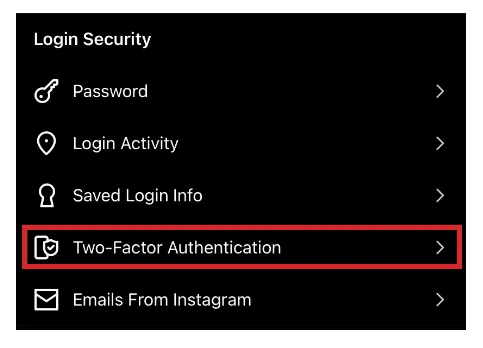How to turn off Two-Factor Authentication on Instagram?
Two-factor authentication is a popular method of identity confirmation for various
web and online applications. It's an extra layer of security that protects you and
your account from impostors. Instagram added two-factor authentication in 2018. With
so many users worldwide, the platform must take care of account security.
What is Two-Factor Authentication (2FA)?
You may be
familiar with single-factor authentication (SFA), which requires users to log in
through a security step, most often a password.
Two-factor authentication
adds another layer of security and can take many forms. This makes it much harder
for cybercriminals to access accounts, thus greatly increasing the security of
accounts. This means that even if a hacker gets hold of someone's password, they
still have to go through an additional layer of security, preferably in the form of
information they cannot obtain.
While the first security step is almost
always a password, the second factor can be any number of things. But one thing is
certain. It should be something that hackers can't access. As you may know, a common
2FA for banks and other financial accounts is to send a security code to your cell
phone. It is assumed that you have a cell phone, so a hacker will not be able to
retrieve that text (at least not as easily).
Here are all the possible
authentication factors (in order of common adoption):
- Knowledge factor -
Based on the user's knowledge (e.g., password, PIN, or personal information), SFA is
usually based on the knowledge factor.
- Possession factor - As mentioned
earlier, this is the most common form of 2FA. In addition to passwords, users need
access to things they possess, such as cell phone text messages, security tokens, ID
cards, etc.
- Inherent Factor - This is a more complex form of 2FA. It is
often referred to as a biometric factor, as in something that is physically specific
to the user. This includes fingerprint, retina, facial and voice IDs, as well as
keystroke dynamics, behavioral biometrics and gait/voice patterns.
-
Location Factor - The location of the login attempt is used as a confirmation
factor.
- Time Factor - A specific allowed time window can be used.
Instagram's
2FA
Instagram's 2FA is a text message sent to your phone in
which you need to enter a code to access your Instagram account. Of course, this is
a possession factor and you will need to have your phone with you. If you no longer
wish to use 2FA for Instagram, or need to assign another phone number to it, do the
following:
1. Tap the profile icon in the bottom right corner of the
Instagram app to go to your profile.
2. Tap the Hamburg icon on the screen.
3. Go to Settings.
4. From there, navigate to "Security".
5.
Tap Two-Factor Authentication.
6. Now, disable the two options you enabled,
most likely the Text Message option.

You can also do this on the Instagram website.
1. Click the
profile icon in the upper right corner of the screen.
2. Click Profiles in
the drop-down menu.
3. Click Privacy and Security in the left menu.
4.
Scroll down the page to the " Two-Factor Authentication" section and deselect the
check mark next to phone number.
5. If the Authentication app option has a
check mark, remove the check mark as well.

Using the Authentication app
Authentication apps are
generally more secure than using Instagram's built-in SMS 2FA. This is because SMS
is more vulnerable to hacking than authentication apps that are built with more
sophisticated security in mind. If your Instagram account has many followers and a
high follower/following ratio, it is best to use both the Text Message and
Authentication App options in the Two-Factor Authentication settings.